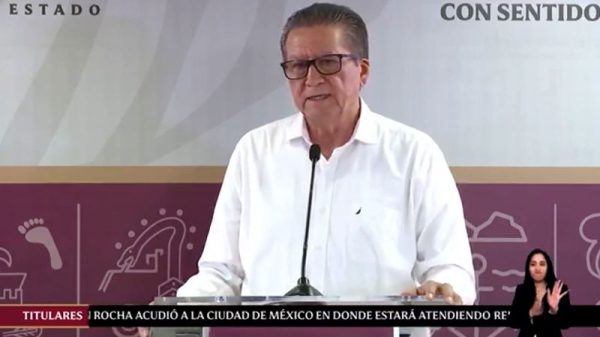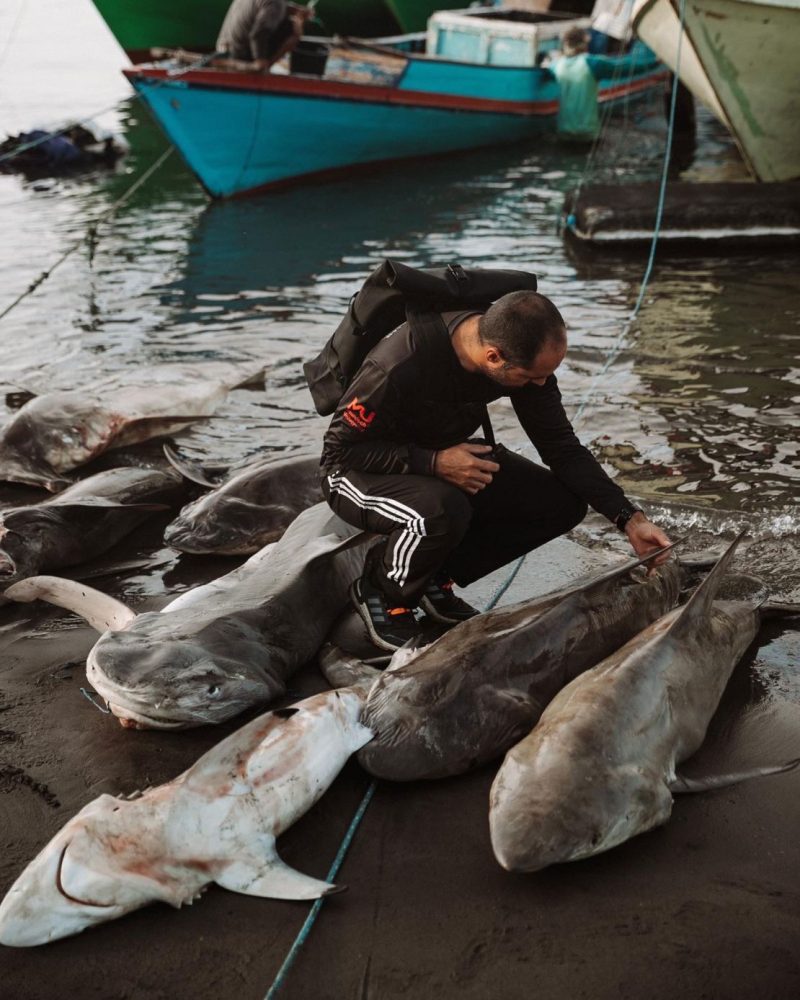Diego Cardeñosa has loved sharks ever since he was a child. The Colombia native was never afraid of them when he visited his beloved beach. Instead, he was fascinated with how sharks move through water using their multiple fins. It’s no surprise he became a marine biologist.
“As soon as I realized they were going through a conservation crisis, I wanted to help what I love the most,” said Cardeñosa.
Sharks need him more than ever. The International Union for the Conservation of Nature reports 35% of all shark species are threatened with extinction. That number has grown nearly 50% in a decade’s time.
The primary reason is overfishing; shark meat and fins are highly sought.
“They are being killed at a rate that cannot be sustained in the future,” said Cardeñosa.
Scientists worry the sharks’ dwindling numbers could bring ecological collapse as they play a number of key roles in the ocean.
Unlike many fish, sharks take a long time to reproduce. Fisheries kill about 100 million sharks a year, according to the non-profit Save Our Seas. Many sharks end up as bycatch when long lines and gill nets unintentionally catch them.
The largest demand that drives the international trade is shark fin soup. “Shark finning is problematic because when you remove the fins from a shark and you put it back in the water, it’s just like a rock or a log just falling to the bottom of the ocean,” said Cardeñosa.
“If they cannot swim, they will suffocate to death.”
Hammerheads are one of the of the most critically endangered sharks- having lost 80% of their population in just the last three decades.
“Their fins are big and really good quality,” said the scientist. “That means they’re thick and they have these cartilaginous filaments that are used in the shark fin soup.”
In recent years, demand has also risen for shark meat- a cheap protein consumed throughout Europe and South America.
A small DNA tool makes a big difference
Today Cardeñosa is fighting the illegal trade of endangered sharks as a Distinguished Postdoctoral scholar at Florida International University in Miami. The marine biologist is using molecular and forensic tools to combat smuggling that stretches from Hong Kong to Latin America.
One of the biggest challenges for law enforcement at ports around the world is determining whether shipments of shark fins and meat are violating CITES- The Convention on International Trade in Endangered Species of Wild Fauna and Flora.
“A lot of the fins look the same,” explained Cardeñosa. “How can you tell whether a shark fin that is coming into the country is legal or illegal, is from a species that is regulated or not regulated?”
Cardeñosa, along with fellow FIU adjunct professor Demian Chapman, came up with a portable DNA kit that looks like a small red cube. It identifies species and country of origin of shark fins and meat coming into ports.
“We take a little piece of this fin, we run it through a machine for two hours, and we’re able to tell what species it is without sequencing very cheaply, very quickly.”
For years, port authorities were sending samples off-site to labs for testing that came back days if not a week later- slowing down the seizures.
Their technology is now used in the shark trade’s busiest ports: Hong Kong, Sri Lanka, Spain, Belize, Panama, Colombia, Ecuador, Peru and Brazil.
Cardeñosa said it has helped Hong Kong authorities go from seizing an average of five tons of shark fins annually before 2018 to one hundred tons since they started using the tool.
His DNA toolkits have also helped stop illegal shipments of European eels and South America’s matamata turtles, earning the marine scientist Interpol’s Directorate of Criminal Investigation and Interpol medal.
A decade of pounding pavement leads to international shark protections
Cardeñosa and a team of Hong Kong scientists have surveyed fish markets for a decade to determine the source of their shark meat and fins.
Using DNA, they’ve tested more than 15,000 samples in Hong Kong and mainland China and discovered a whopping two-thirds of what’s being sold in those markets are from threatened shark species.
“We’re removing and trading some of the ones that are the most critically endangered in the ocean,” said Cardeñosa.
That research has helped expand the number of shark species now regulated by CITES. Governments that sign on to the agreement must require permits for every shipment of shark products that moves through their ports, ensuring the trade is legal, traceable and sustainable.
Cardeñosa said when he got started in the field, there were only five or six shark species regulated by the CITES agreement. Today there are more than 150 sharks and rays covered.
Cardeñosa also discovered through genetic tracing that 85% of the fins at those markets belong to sharks caught in the Eastern Pacific, which stretches from Baja, California south through Central and South America to Peru- including Cardeñosa’s home country, Colombia.
“The vast majority of the markets and the fisheries for sharks around the world are unsustainable, unmanaged, unregulated and sometimes illegal,” said Cardeñosa.
The scientist is working with fishermen in South America – some of whom rely on fishing all kinds of marine life for their livelihoods. He’s teaching them ways to fish sustainably – without dangerous long lines and gillnets – and how to protect known endangered shark populations.
“What we’re trying to do is to identify areas where those hammerhead sharks spend the majority of the time and make agreements with them to not fish those locations.”
Cardeñosa says good management of shark fisheries “is a really hard task to do. Everybody is trying to find a way to do it.”
He also enlists those local fishermen to help him. “We teach them how to collect data and bring them in as part of our projects to help.”
The shark scientist is also trying to convince more countries to sign on to the CITES convention on sharks.
How you can help sharks
One of the easiest ways to help sharks and all marine life is to try to consume seafood from sustainable sources. There are a number of online resources and apps for that including the Monterey Bay Aquarium Seafood Watch.
Just 4% of global shark catches are sustainable – so it’s generally not a good idea to consume sharks. Additionally, their dense meat often contains a lot of mercury.
“That will go to our lab and our programs to fund these projects and really have an impact on a global scale.”
You can also donate to the research Cardeñosa is conducting at FIU’s Research Foundation.







































